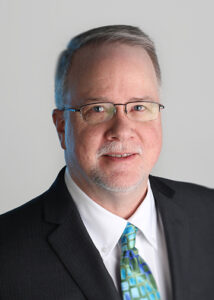
After a brief 34-day interval from the close of the comment period to the publication of the final rule, the Centers for Medicare & Medicaid Services (CMS) finalized its proposal to implement the Patient-Driven Payment Model (PDPM), largely as proposed with only a few modifications. PDPM will be effective October 1, 2019, and implemented in a budget-neutral manner.
With this action, CMS has sent a strong signal—it is time for change. Since the changes to the April 27, 2018, proposed rule are largely tweaks, our basic take on PDPM remains the same. Well before October 2019, skilled nursing providers need to:
- Understand the financial impact and identify key operational levers.
- Ensure that Minimum Data Set (MDS) coding, including ICD-10 diagnosis coding and Section GG (functional impairment), are complete and accurate. Your Medicare revenue will depend on it!
- Evaluate the provision of therapy and move from a focus on therapy minutes to a focus on functional outcomes, while also understanding the relationship of revenues and costs over the whole length of stay.
- Enhance clinical capabilities, and consider making the pivot to a more medically complex caseload, thereby increasing your value to the system and driving occupancy.
The new payment system will help skilled nursing facilities (SNFs) better integrate into a value-based environment (e.g., bundlers, ACOs). In addition, Medicare Advantage plans are likely to adopt it in whole or in part, allowing for better integration across payors.
October 1, 2019, will be here before you know it. In the meantime, following is a summary of what has changed and what is staying the same in the final rule.
What Changed
There are four key changes from the April 27, 2018, proposed rule.
Interim Payment Assessment (IPA) and Related Assessment Policies
Rather than making the Interim Payment Assessment (IPA) a required assessment as proposed, it will be optional, and providers may determine whether and when an IPA is completed. Because of that, CMS is revising the Assessment Reference Date (ARD) criteria such that the ARD will be the date the SNF chooses to complete the assessment relative to the triggering event that makes the SNF complete the IPA. Payment based on the IPA will begin the same day as the ARD.
The IPA was placed into the payment system as a way to recognize changes in patient condition over the course of the stay. Providers were concerned about operationalizing this component and the resulting compliance risk if not implemented correctly. By making this optional, CMS has attempted to address those concerns. Guidelines for IPAs will be developed.
MDS Coding for Physical Therapy and Occupational Therapy Components
CMS finalized the proposed PT and OT components under the PDPM, as well as the methodology for classifying residents under the PT and OT components, with one important modification. The proposed rule required providers to record the type of inpatient surgical procedure performed during the prior inpatient hospital stay by coding an ICD-10-PCS code in the second line of MDS item I8000. In response to comments, CMS will instead require providers to select, as necessary, a surgical procedure category in a sub-item within MDS Item J2000. This category will identify the relevant surgical procedure that occurred during the patient’s preceding hospital stay and will augment the patient’s PDPM clinical category.
This checklist approach will help reduce administrative burden for coding the preceding surgical procedures, but SNFs will still need to up their game on ICD-10 coding on the MDS as it determines the primary reason for the SNF stay.
Functional Impairment (Section GG of MDS) Coding Tweaks
For purposes of calculating the function score, all missing values for section GG assessment items will receive zero points. Similarly, the function score will incorporate a new response “10. Not attempted due to environmental limitations” and CMS will assign it a point value of zero. The final rule further states:
Furthermore, consistent with a commenter’s suggestion, we will adopt MDS item GG0170I1 (Walk 10 feet) as a substitute for retired item GG0170H1 (Does the resident walk), and we will use responses 07: “resident refused,” 09: “not applicable,” 10: “not attempted due to environmental limitations,” or “not attempted due to medical condition or safety concerns” from MDS item GG0170I1 to identify residents who cannot walk.
These technical changes point out the importance of mastering Section GG, which also plays a role in SNF quality metrics under the Quality Review Program (QRP).
Administrative Presumption for Medicare Coverage
CMS finalized proposed classifiers for purposes of applying the administrative presumption, with the following modification: “As discussed in that section, we added 6 PT and OT classifiers and 8 SLP classifiers.”
What Didn’t Change
All of the remaining items below are finalized as proposed:
- Federal base payment rates or wage index policy.
- SLP, Nursing, and Non-therapy Ancillary (NTA) components of PDPM, including how patients are classified into those categories.
- Variable Per Diem Adjustment (VPDA), utilizing the adjustment factors and schedule for the PT and OT components found in Table 30 and the adjustment factors and schedule for the NTA component found in Table 31 of the final rule. As noted previously, the VPDA now injects length of stay considerations into the payment system for therapy cases (based on how per diem costs change over an episode).
- Interrupted stay policy, which requires completion of a new MDS if there is a readmission to the hospital that is longer than three days and/or admission to a different SNF during the episode.
- Replacing the existing add-on for patients with AIDS with the PDPM permanent adjustment in the case-mix that appropriately accounts for the increased costs of patients with AIDS.
- Additions to the Swing Bed PPS Assessment found in Table 34 of the final rule.
- Additions to the PPS Discharge Assessment found in Table 35 of the final rule.
- Application of a combined 25 percent limit on group and concurrent therapy, per therapy discipline, as well as the proposal to implement a nonfatal warning edit on a provider’s validation report when the amount of group and concurrent therapy exceeds 25 percent within a given therapy discipline.
The final point is an interesting case of CMS having its cake and eating it, too. With the implementation of PDPM, CMS is sending a strong signal about moving away from having the amount of therapy drive payment. But by retaining these limits (without a direct penalty, mind you), CMS is also saying that it still expects at least 75 percent of therapy to be individual. CMS is clearly concerned about wholesale changes to therapy, yet they are implementing a payment system that incentivizes it.
Our take is that SNFs need to understand how to get functional outcomes in the most efficient manner possible and be able to justify that approach with solid evidence on quality. CMS will be monitoring implementation so providers need to be mindful of new compliance risks under this model.
Stay tuned for more information from HDG. Please contact us if you are interested in preparing for this important change in payment. For more information, visit our website or contact us at 763.537.5700 or info@hdgi1.com.
 Authored by:
Authored by:
Brian Ellsworth
Vice President, Public Policy and Payment Transformation

